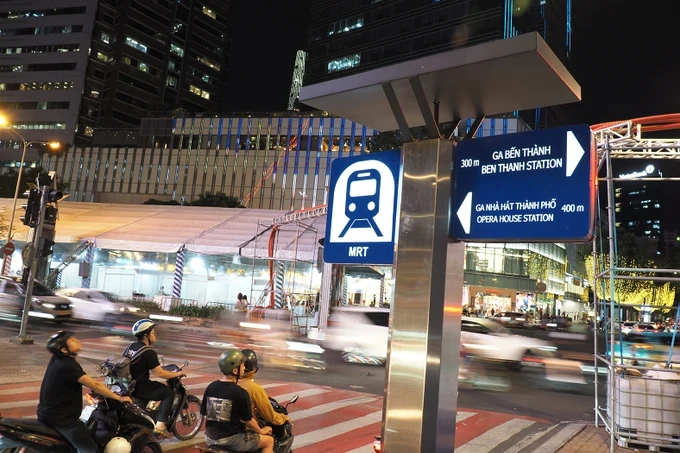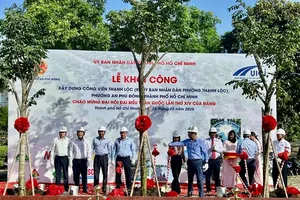
Director Le Minh Triet of HCMC Urban Railway Company No. 1 (HURC1) revealed that the automated fare collection (AFC) system at metro stations is fully prepared to serve passengers. HURC1 will issue approximately 600,000 train tickets for the initial commercial operation phase. The company will transparently publish ticket pricing at metro stations, through media channels, and on their website to facilitate passenger ease and expedite ticket purchases.
Additionally, detailed information regarding schedules, ticket prices, and station details will be updated on websites and mobile applications, enabling citizens to conveniently plan their movements and ensure timely travel. Passengers can register for tickets directly at stations along the line.
- Ticket fares, including passenger body insurance, fluctuate between VND6,000-20,000 (US$0.24 – 0.79) per journey, contingent upon payment method and travel distance;
- Day passes VND40,000 ($1.58) offer unlimited daily travel;
- Three-day tickets VND90,000 ($3.54) provide unrestricted trips within that period;
- Monthly passes for standard passengers VND300,000 ($11.81) have unlimited monthly travel;
- Student monthly tickets are priced at VND150,000 ($5.91).
Metro passengers must traverse ticket control gates featuring two small barriers, positioned at the gate’s entrance and exit, after scanning their ticket. The gate opens upon ticket validation. Following successful scanning, passengers board the train and subsequently verify their ticket.
Passengers must retain their ticket throughout the journey for exit gate scanning upon trip completion. Absent any complications, the entire process from ticket purchase to train boarding consumes merely 2-3 minutes.
The line features fare adjustment machines for passengers exceeding their originally purchased route segment. For instance, if a passenger purchases a ticket from Ben Thanh Station to Ba Son Station but continues to Suoi Tien Station, they can utilize the automated ticket machine at Suoi Tien station to supplement the price differential, ensuring sufficient coverage for the entire travel route.
Ticket and fare adjustment machines are strategically positioned at stations, easily visible and conveniently accessible to passengers. These machines offer multi-functional capabilities, including display screens, cash and coin receptacles, keyboards, and receipt printers.

Comprehensive step-by-step guidance for ticket purchases, returns, and monetary loading is provided. Screen interfaces facilitate destination selection and display the corresponding travel cost. Additional functionalities include ticket information verification, deposit refunds, change provision, and AFC card monetary loading.
The AFC system at metro stations comprises ticket vending machines (TVM), fare adjustment machines (FAM), ticket gates (PG), station staff terminals (SST), station servers (SS), a central server (CS), and network equipment, card issuance and recycling devices, cash management equipment, and contactless smart IC cards.
The AFC system provides approximately 5 million contactless IC cards for train travel, including three basic types: single-journey tickets, day passes (covering 1 and 3 days), and rechargeable cards.
The ticket machines additionally accommodate discounted tickets for priority passengers, monthly passes, while supporting various payment methods, including EMV banking systems from domestic and international payment networks like Napas, Mastercard, Visa, JCB, and e-wallets such as VNPay and MoMo.
“During initial operations, the first month will be complimentary, so immediate pre-sale ticket implementation is not yet planned,” stated Director Le Minh Triet.
In response to the inquiry of when passengers can use a single card for buses, metro, and bicycles, Head Ngo Hai Duong of the Transport Management Division under the HCMC Transport Department informs that his Department will propose to the HCMC People’s Committee to issue fares for intermodal transportation, facilitating convenient use of public transport in the city. This system will allow passengers to switch between public transport modes with just one ticket, saving both time and money.
For the implementation of integrated ticketing for various public transport modes, the HCMC Management Center for Public Transport (MCPT) reported that they are currently installing equipment and conducting technical tests, aiming to put the system into operation in the first quarter of 2025.
Meanwhile, cashless payments will soon be implemented across the entire bus system. Deputy Director Le Hoan of MCPT informed that the unit is deploying cashless payment systems on buses and expects to introduce them for widespread use in the first quarter of 2025. Residents will be able to use banking apps on their phones to pay for bus fares.
Economic experts suggest that HCMC should complete the integration of a single payment card for all public transport as soon as possible. Deputy General Director Nguyen Dang Hung of National Payment Corporation of Vietnam (NAPAS) analyzed that the current lack of standardization and interconnectivity of public transport payment cards in the city has forced residents to purchase multiple cards and use cash, causing inconvenience and discouraging the use of public transport cards.
Meanwhile, many countries have long implemented integrated ticket systems for various modes of transport, and they even use bank cards for payments on public transport using contactless technology or QR code scanning on smartphones.
Therefore, HCMC should urgently apply cards that allow inter-operability with all public transport service providers, including buses and metro, to facilitate and encourage citizens to use this transport mode more often, thereby laying the foundation for reorganizing urban transportation.


)





















